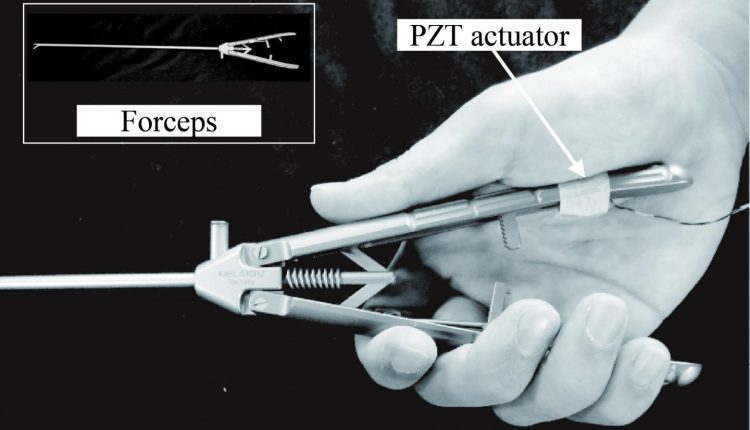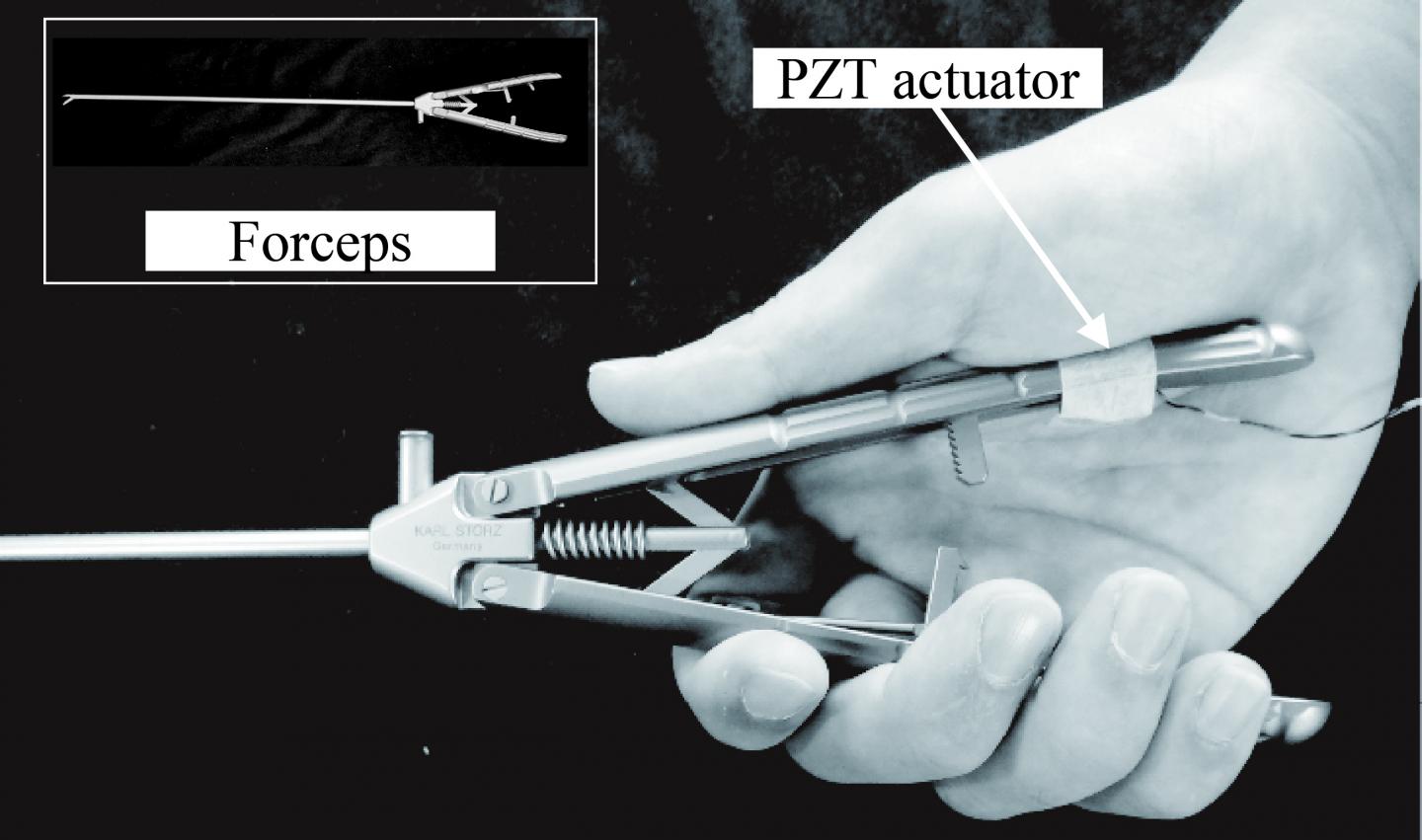
Vibrating surgical device lets doctors feel what they can’t touch
When doctors perform minimally invasive surgeries they typically rely on long and thin metal tools to explore within a patients’ body. These laparoscopic surgeries can be a benefit to patients by reducing the size of surgical cuts and minimizing scarring. However, along with this added benefit comes an inconvenience to surgeons since they can no longer use their fingers to directly touch patients and sense essential information about their organs.
To help with this, a team of engineers from Hiroshima University designed a small vibrating device that can be attached to any existing hand-held surgical tool and be used instantly — without requiring extra training for doctors.

This addition could improve surgeons’ sensitivity to different shapes and textures inside their patients’ bodies.
“We started this work six years ago, trying to enhance human fingertip sensitivity, but in 2012 I had the idea that increased sensitivity could be valuable during minimally invasive surgeries. Typical medical tools obtain information about the patient’s condition. There are very few devices that aim to enhance the doctor’s skill,” said Yuichi Kurita, Ph.D., lead author of the study and Associate Professor at Hiroshima University.
How it works
The vibrator, called PZT Actuator, attaches to a surgeon’s tool and vibrates in the his or her palm at a constant rate. These vibrations are so subtle they cannot be sensed. This constant uniform vibration enhances the surgeon’s sensitivity to other, irregular sensations. The natural variations of touching different tissues with a metal tool may normally be too subtle for the surgeon to detect, but the constant vibrations supplied by the device actually boost the sensation to a noticeable level.
To develop the tool, the researchers first tested the device through mathematical modeling using calculations of four types neurons and their response to different levels of mechanical stimulation. The mathematical term describing the phenomena of a constant undetectable signal enhancing a simultaneous irregular signal is called the stochastic resonance effect.
In testing, the engineers asked blindfolded volunteers to use surgical forceps with the PZT Actuator attached to the handle and identify different textures of sandpaper to find a small Styrofoam ball inside a cup filled with silicone. These tests mimic detecting tissue texture and identifying a solid tumor.
The results revealed that there is a range of vibration intensity that significantly improves anyone’s sensitivity. Since the the tool does not need to be fine-tuned to each user’s unique sense of touch it is considered an easy-to-use solution.
The PZT Actuator is also safe for patients because the device is only on the handles of the surgeon’s tools, not inside the patient’s body. The vibrations are so subtle that they do not shake the tool and the electrical power supply is also safe.
“Our next set of experiments will confirm the usefulness of the PZT Actuator in surgical situations. Before we can give this tool to surgeons, we must also develop a method to maintain good hygiene of the device so it is always safe for patients,” said Kurita.

Comments are closed, but trackbacks and pingbacks are open.